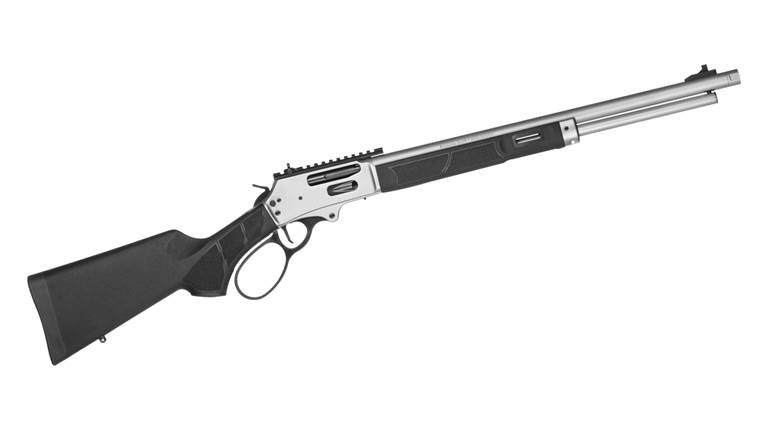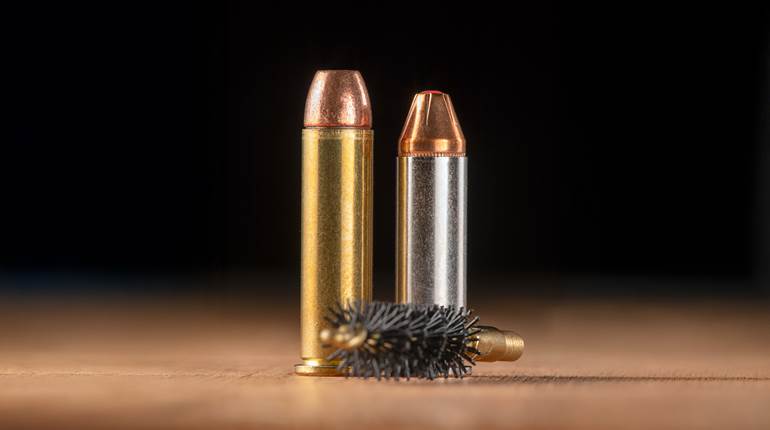
When Smith & Wesson introduced the Governor in 2011, the concept of a revolver capable of chambering shotshells wasn’t groundbreaking. The new entry from a legendary maker, however, quickly caught media attention at the SHOT Show that year and for some good reasons.
The revolver, built on the firm’s Z Frame, is versatile. It safely chambers and reliably runs 2 1/2" .410 Bore shotshells, .45 Colt and—with the use of moonclips that come with the gun—it also digests .45 ACP.
Its six-round cylinder capacity also set it apart from the competition. Some considered it somewhat large for carry at the time, but as B. Gil Horman noted in his August 2011 review for American Rifleman, “The overall appearance of the Governor may give the impression that it’s too big of a gun for concealed carry. But its moderate weight of 29.6 ozs., the standard six-shot thickness of the cylinder, the 2.75" barrel and the K-frame-sized grip places the Governor in line with other duty-size revolvers and semi-auto pistols. Essentially, barrel length was traded out for cylinder length, and the weight is kept at a reasonable level by the scandium frame. If you already carry a duty-size gun, then the Governor will not be much of a stretch.”
The ability to stop a criminal attack with a birdshot load was a hotly contested discussion at the time, but ammunition companies subsequently responded by producing .410 shotshells tailored for self-defense. That ended the debate, and coupled with the ability to run .45 Colt and .45 ACP, the Governor remains a viable choice for that duty.
Scandium alloy in Governor frames helps reduce overall weight. The approach doesn’t compromise strength, however, because the barrel and cylinder—where pressures are highest—are steel.
The revolver operates double-action/single-action, has an external hammer and features a recoil-soaking synthetic grip in businesslike black. Front sights are either a black ramp or dovetailed tritium up front, depending on model. Both versions available today have an overall length of 8.5 inches and wear a fixed rear sight.
The variant with matte-silver frame and stainless steel barrel cylinder and barrel has an MSRP of $865. The tritium-sight equipped model, with an all-black finish and PVD steel cylinder, comes in at $925. Take a look at our gallery of images that details the quality control maintained during their manufacture, and its easy to understand why the guns are backed by the Smith & Wesson Lifetime Service Policy.



































